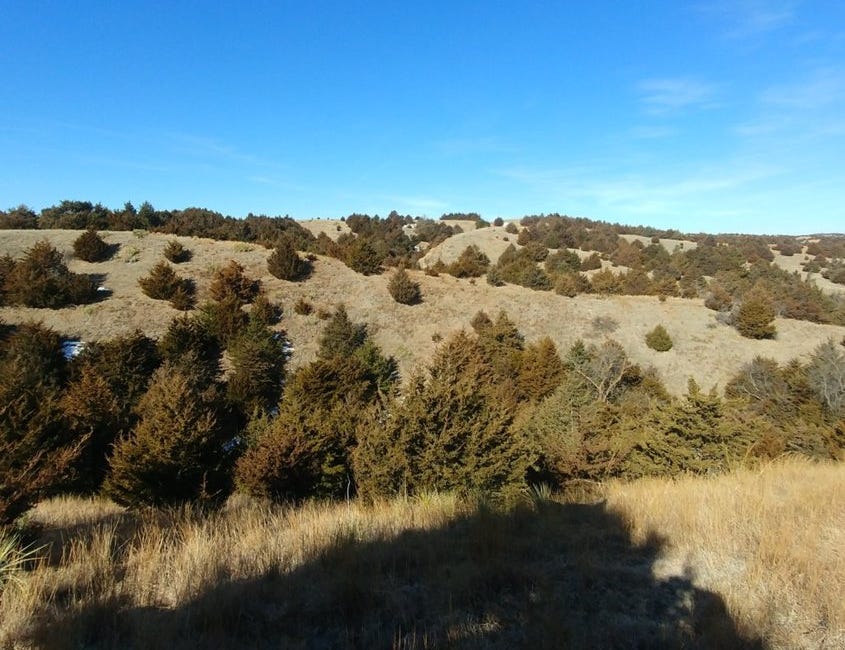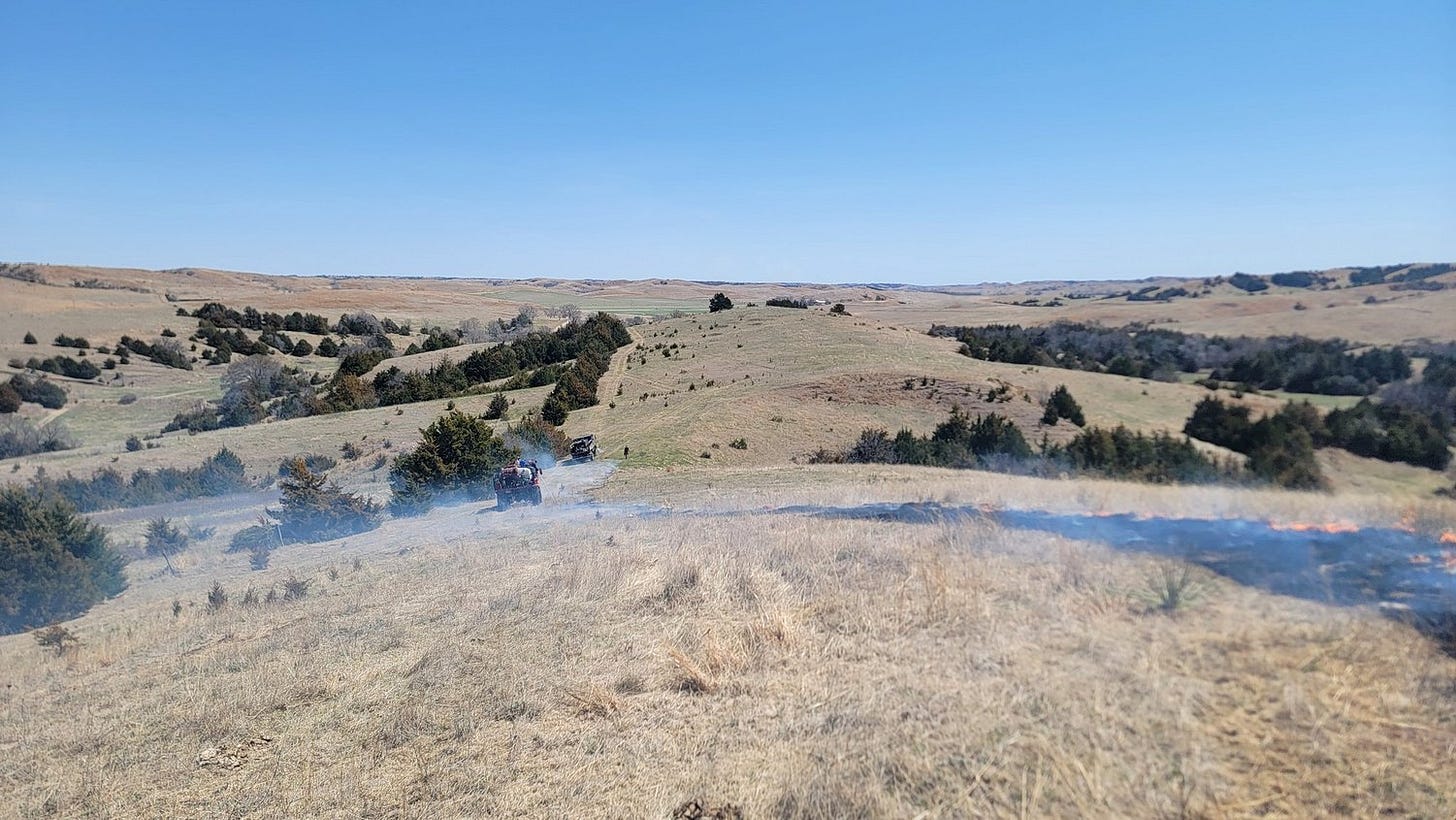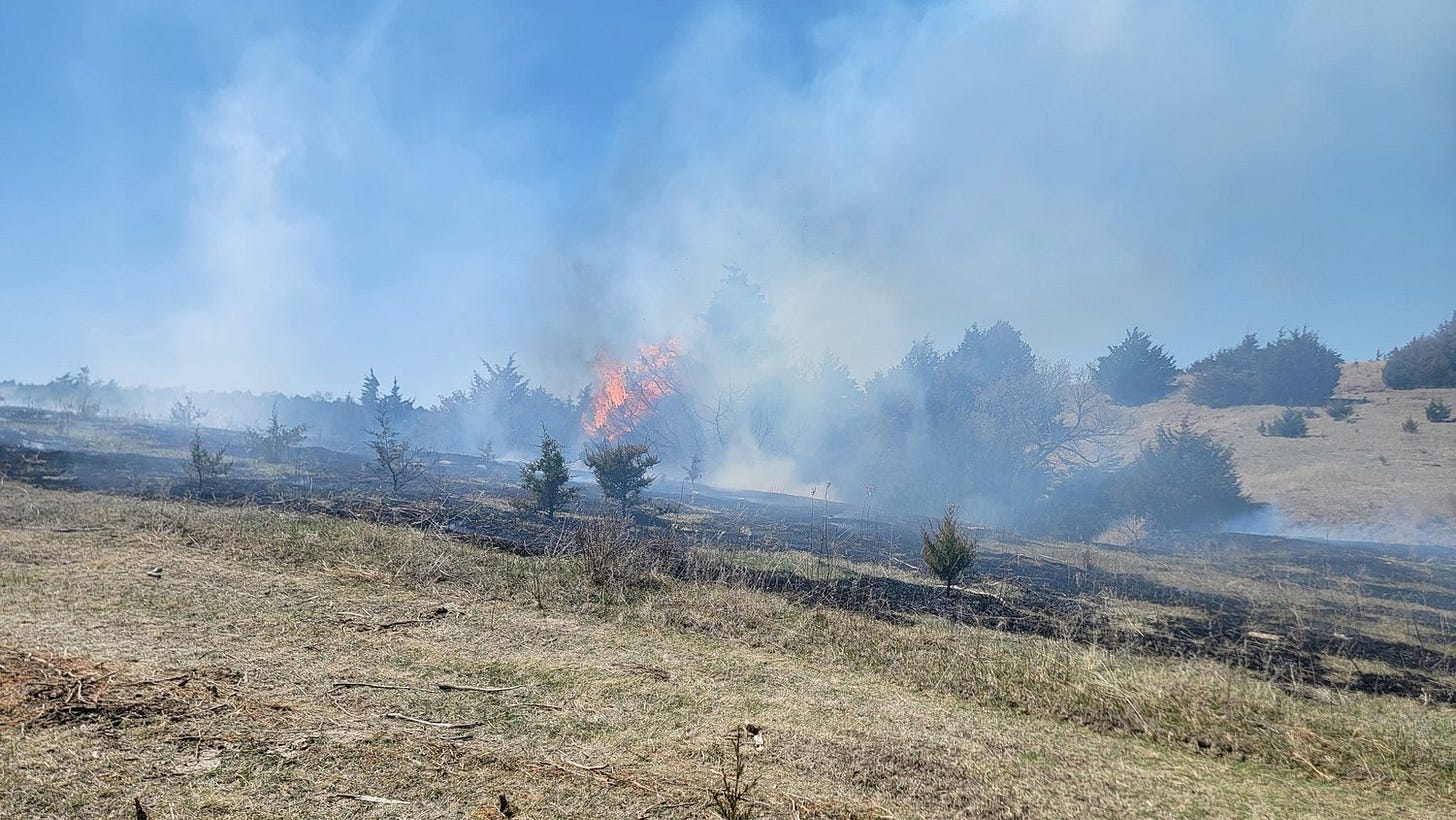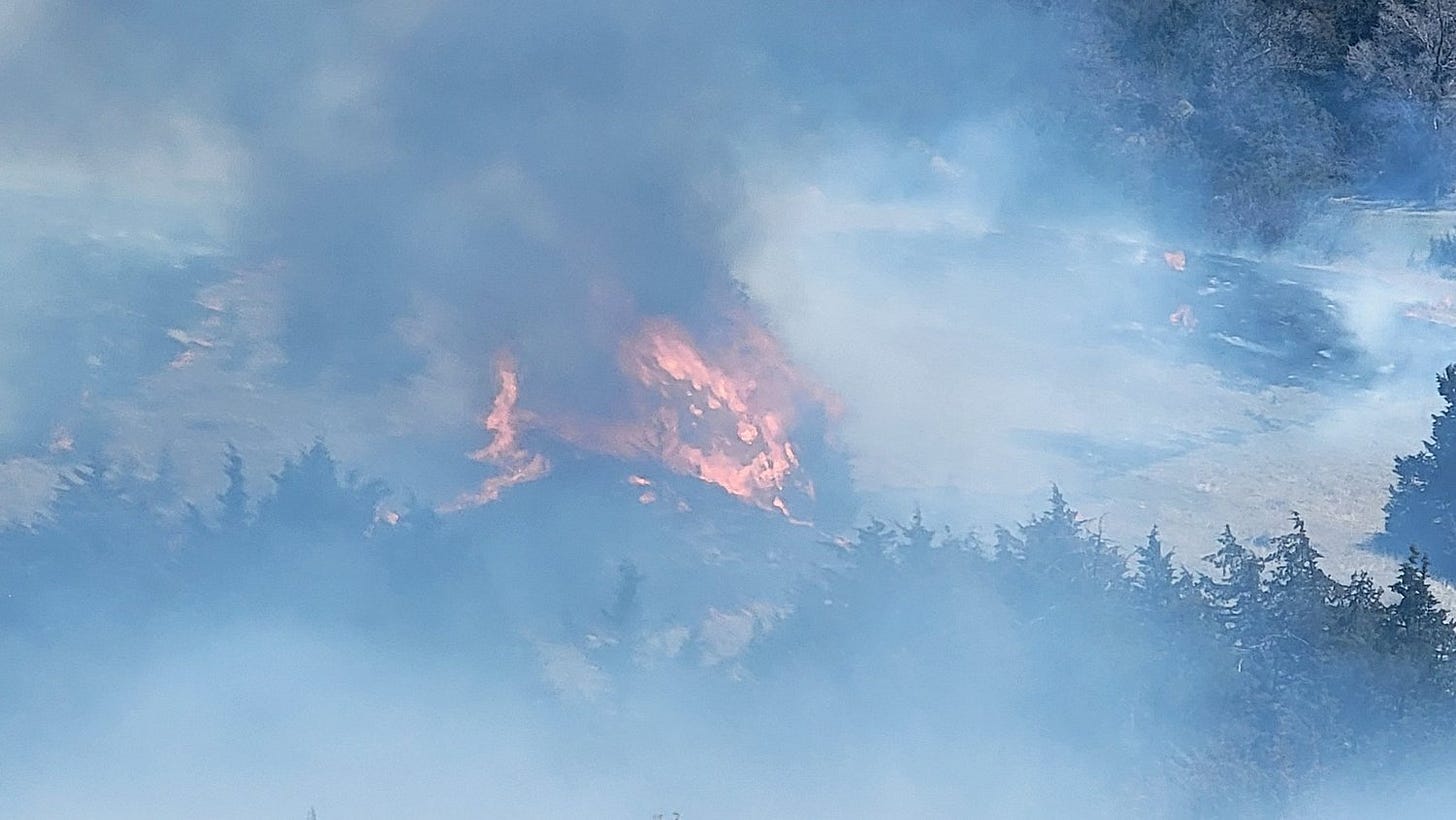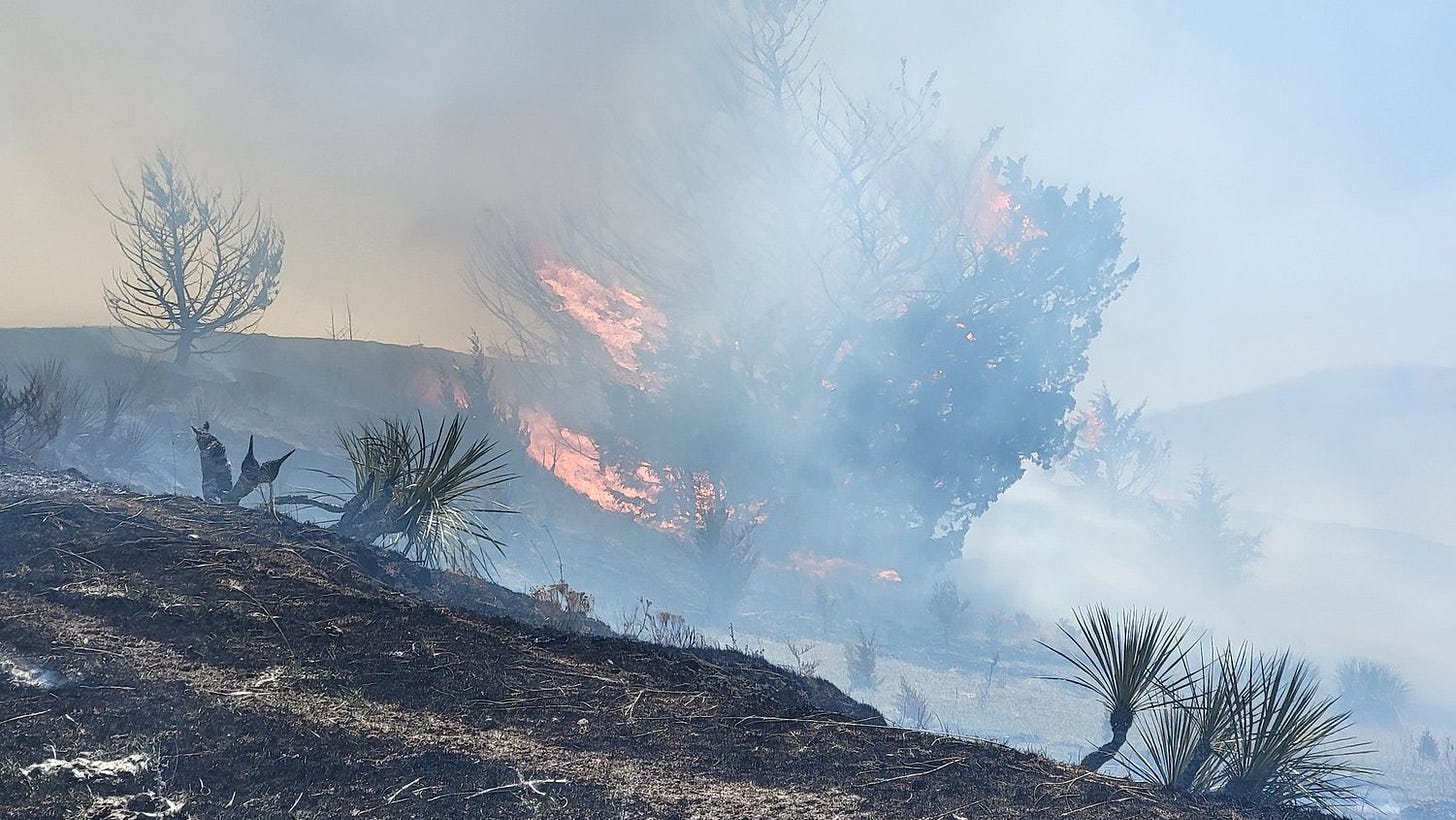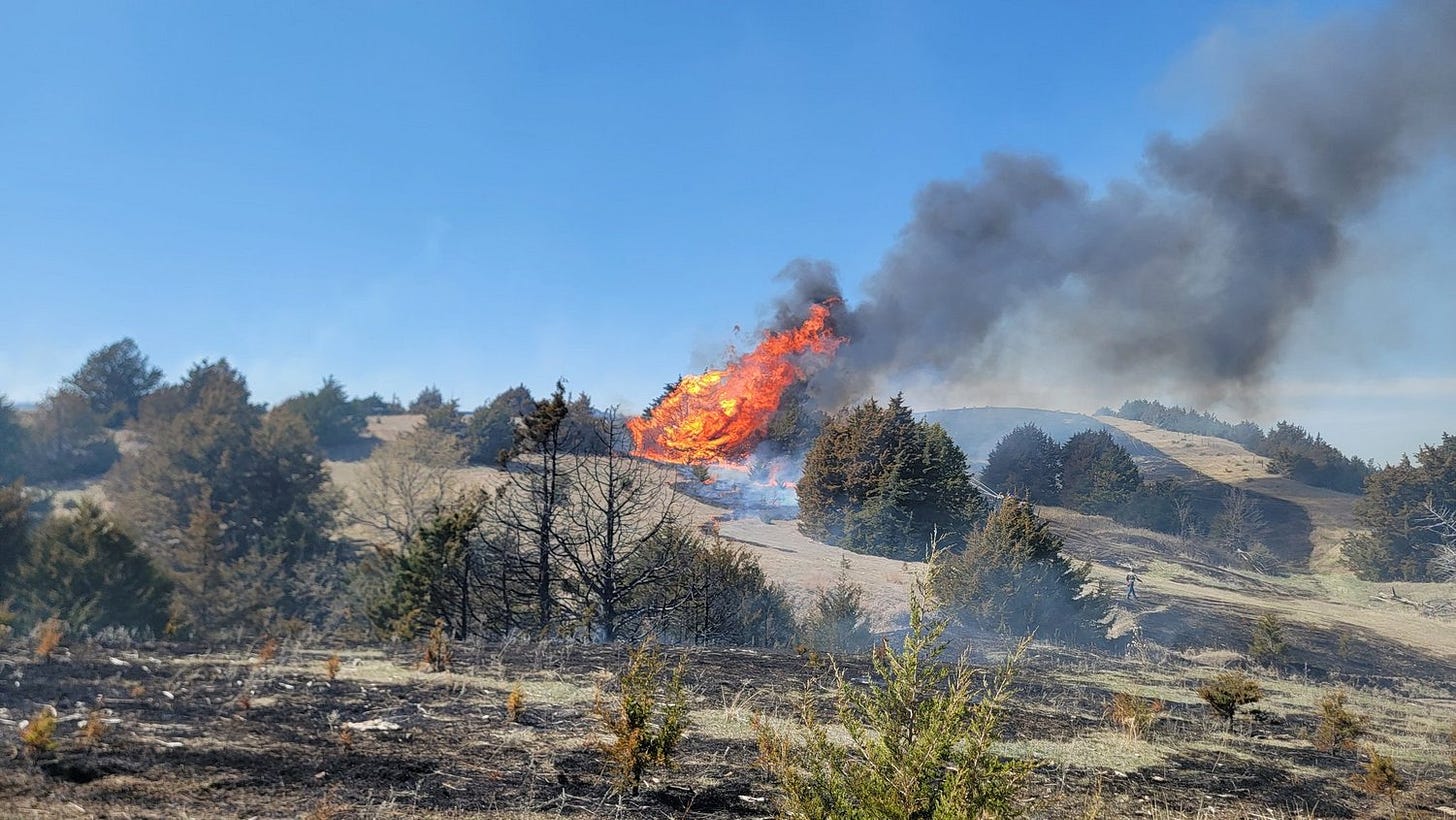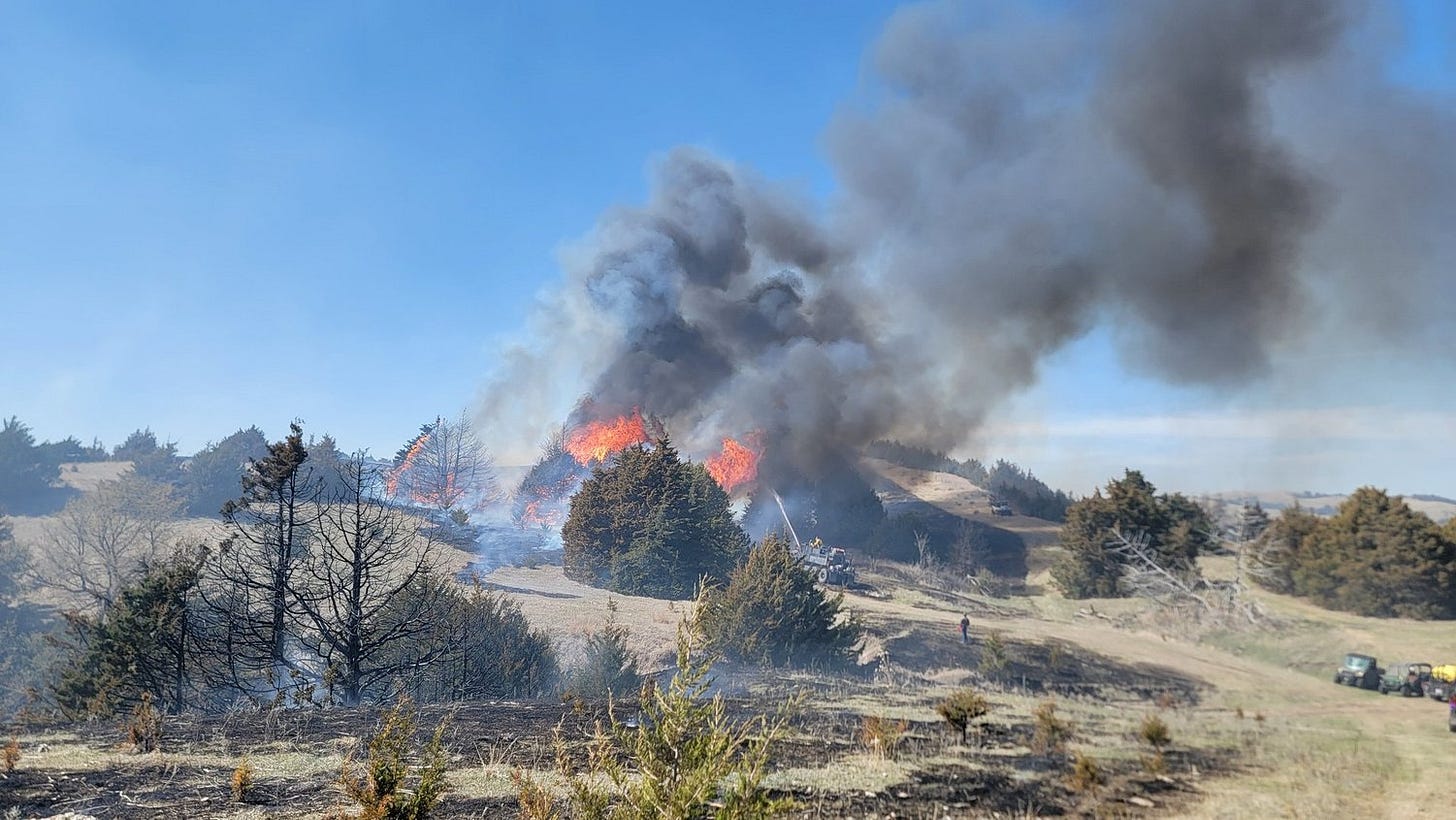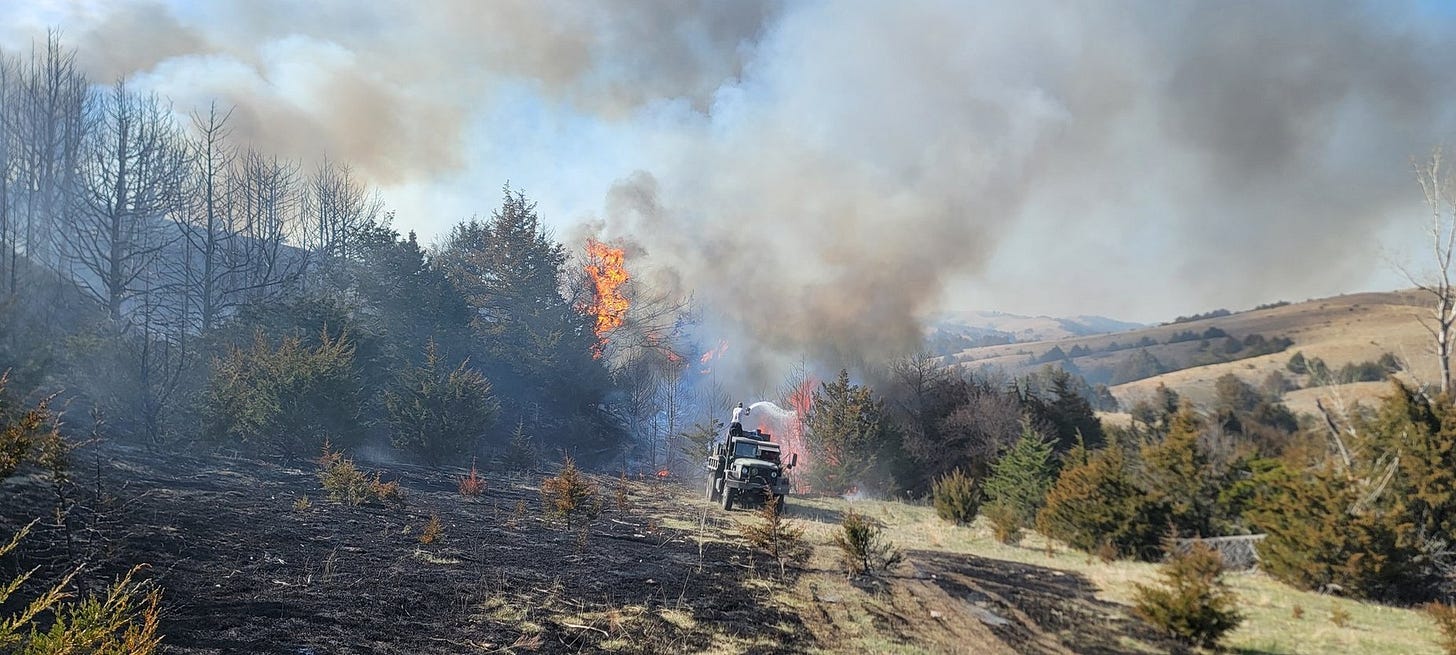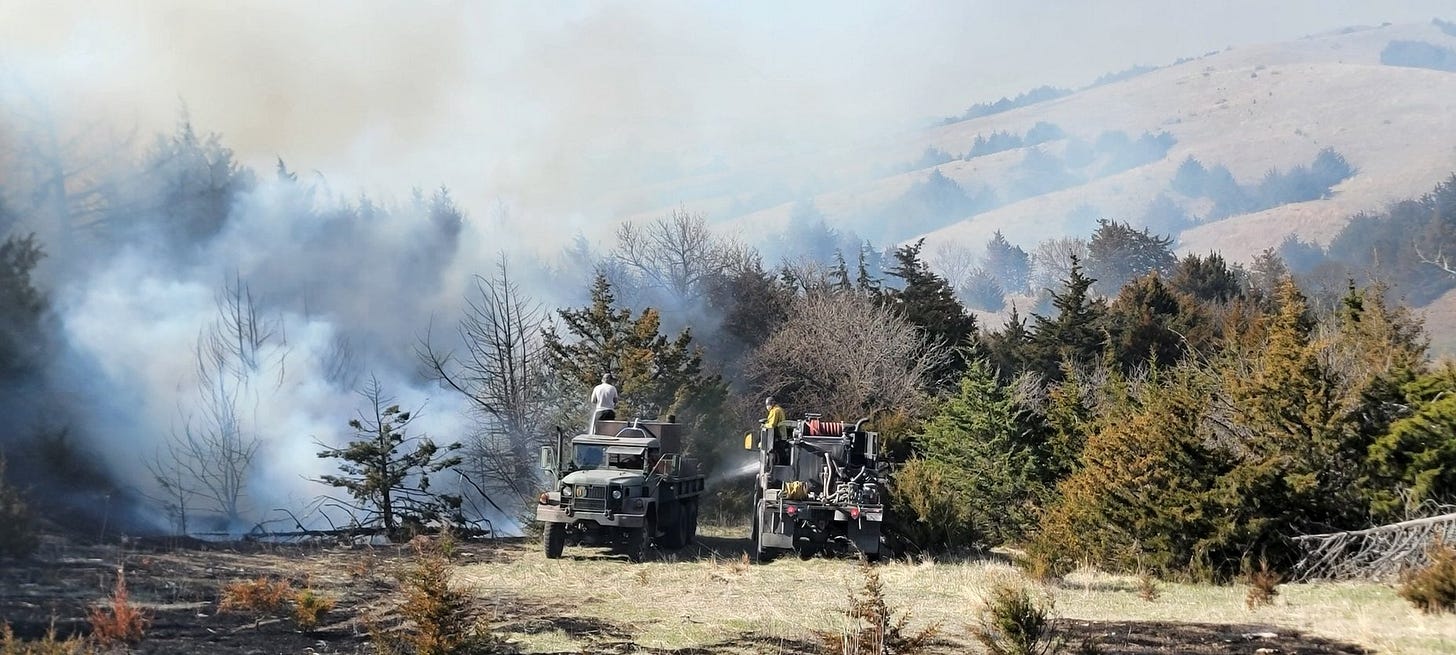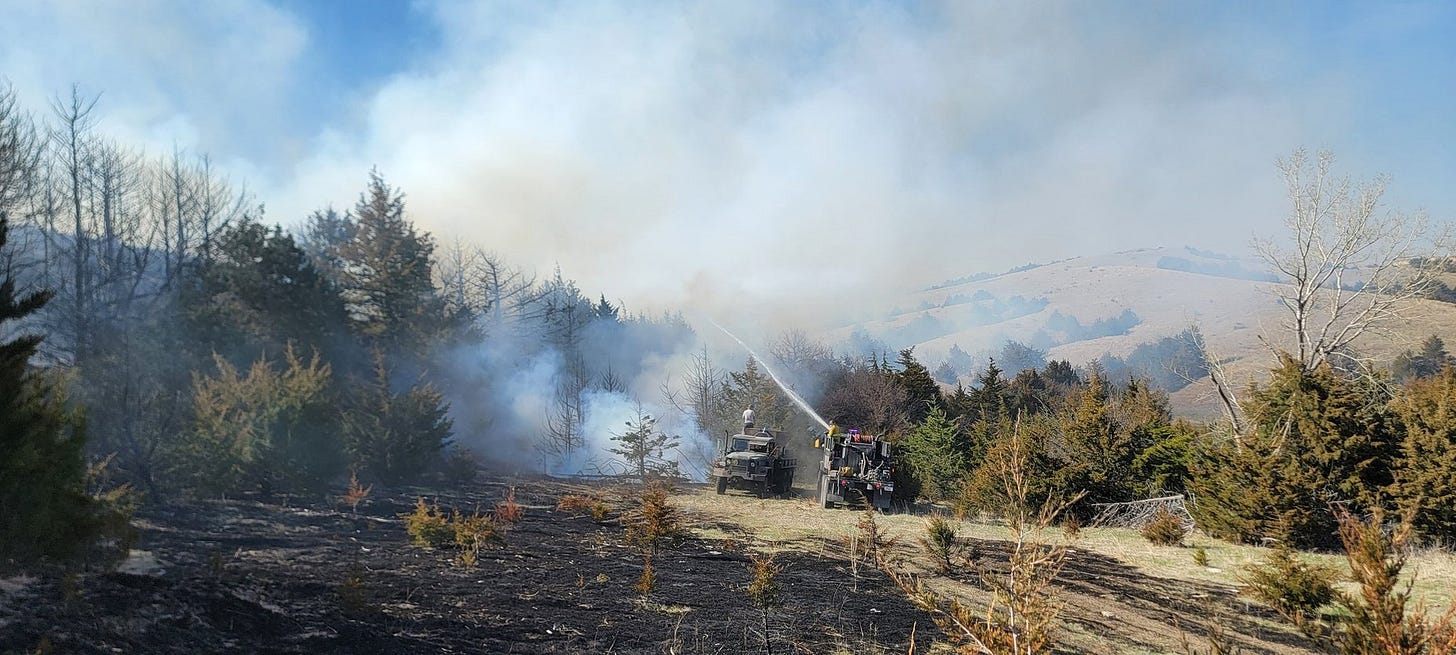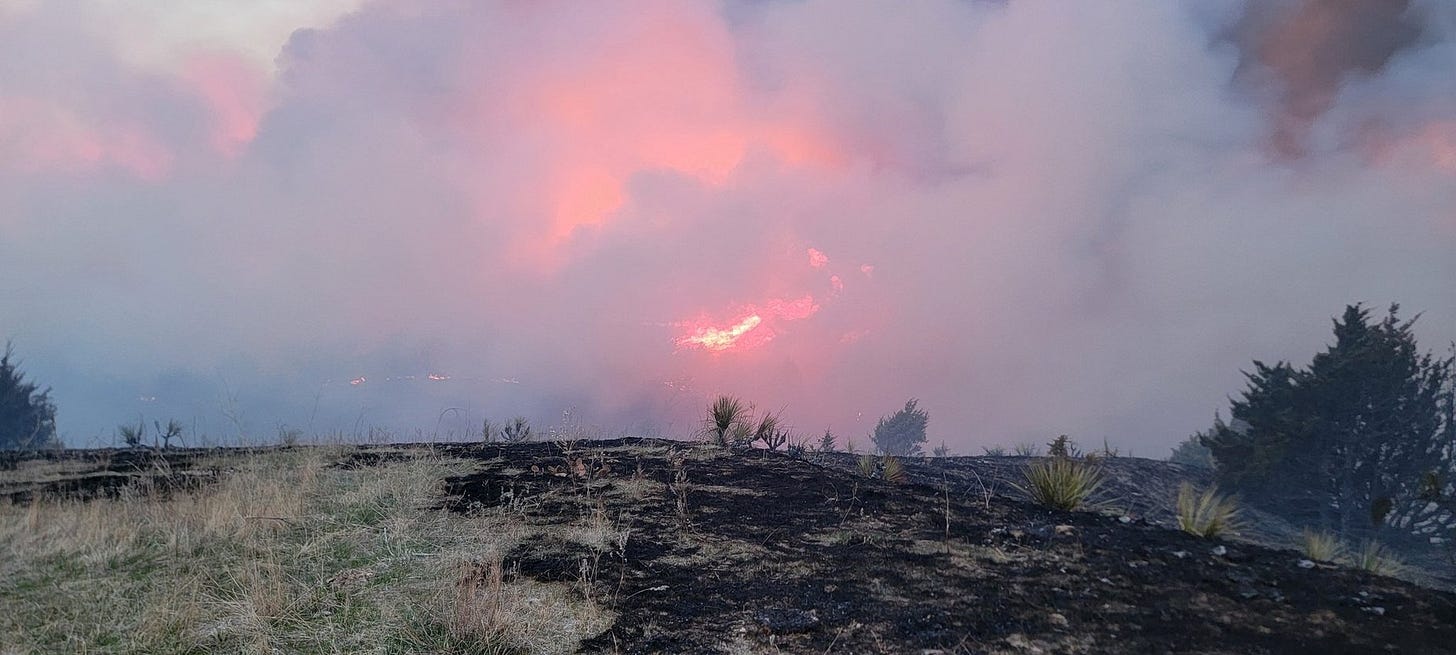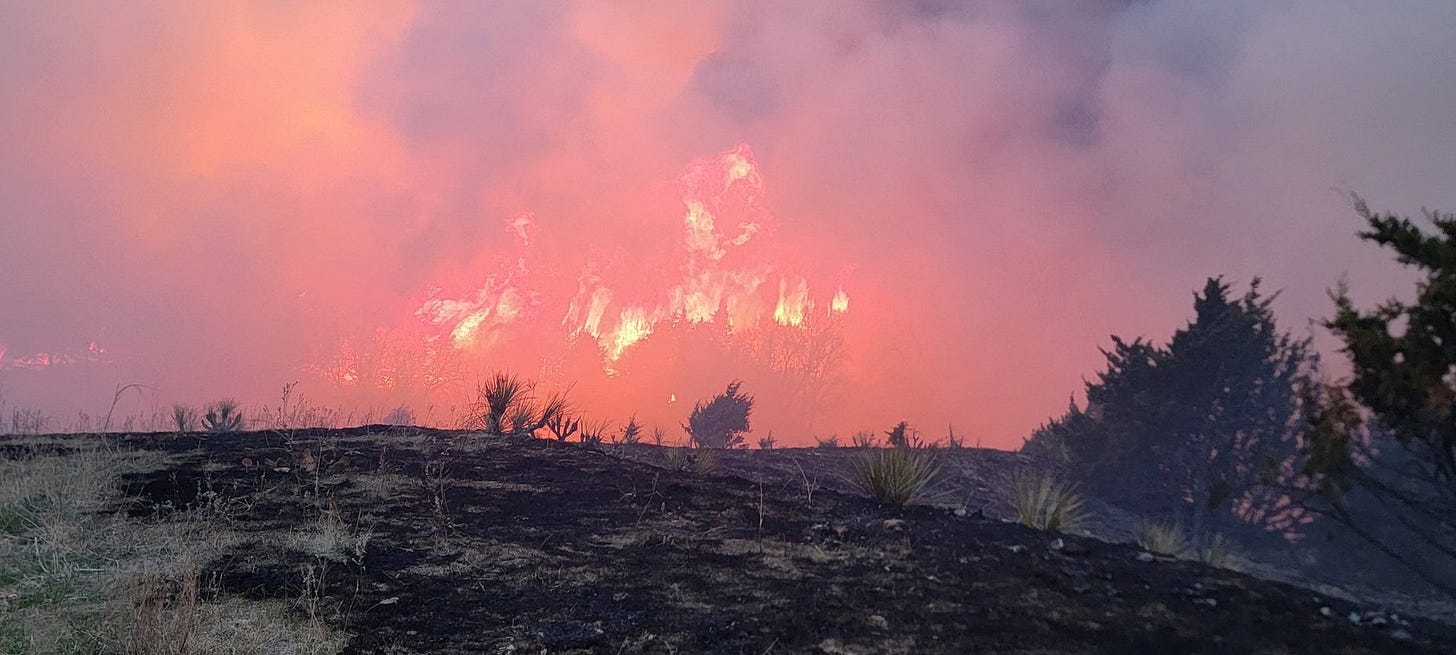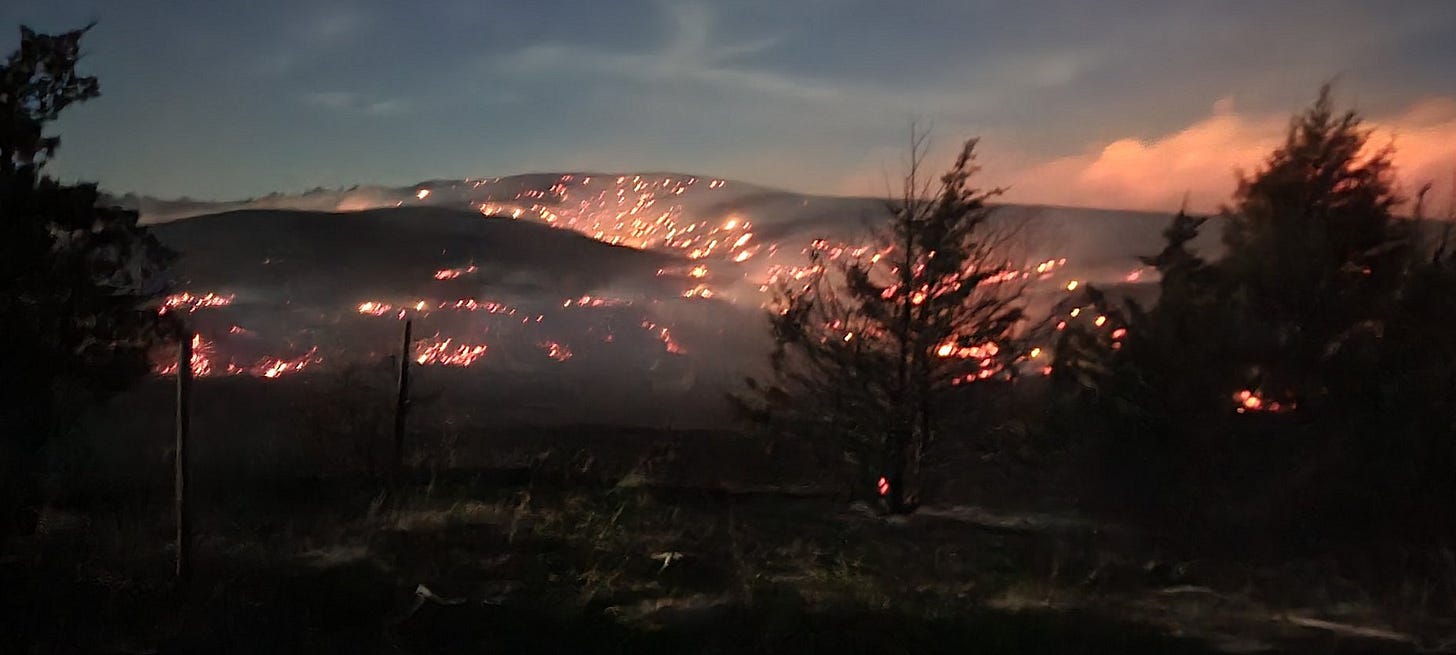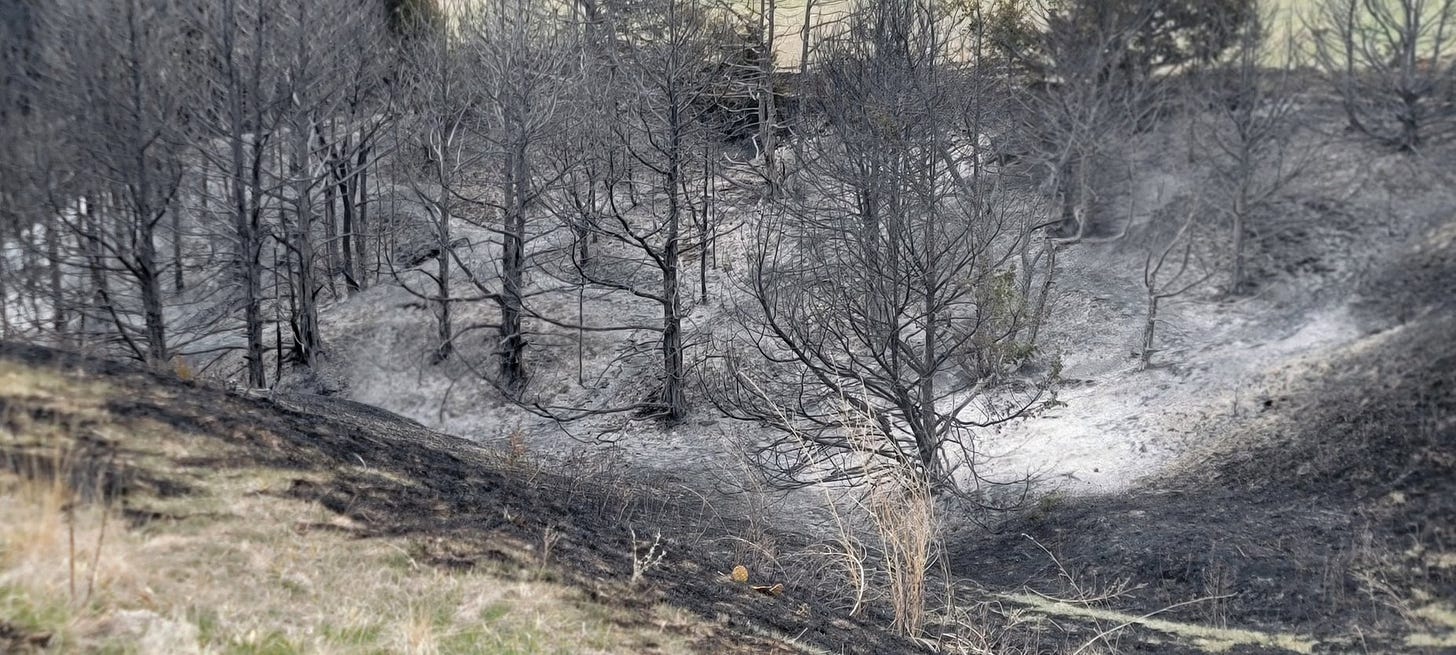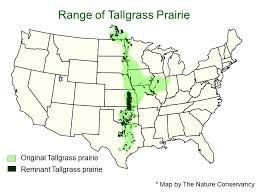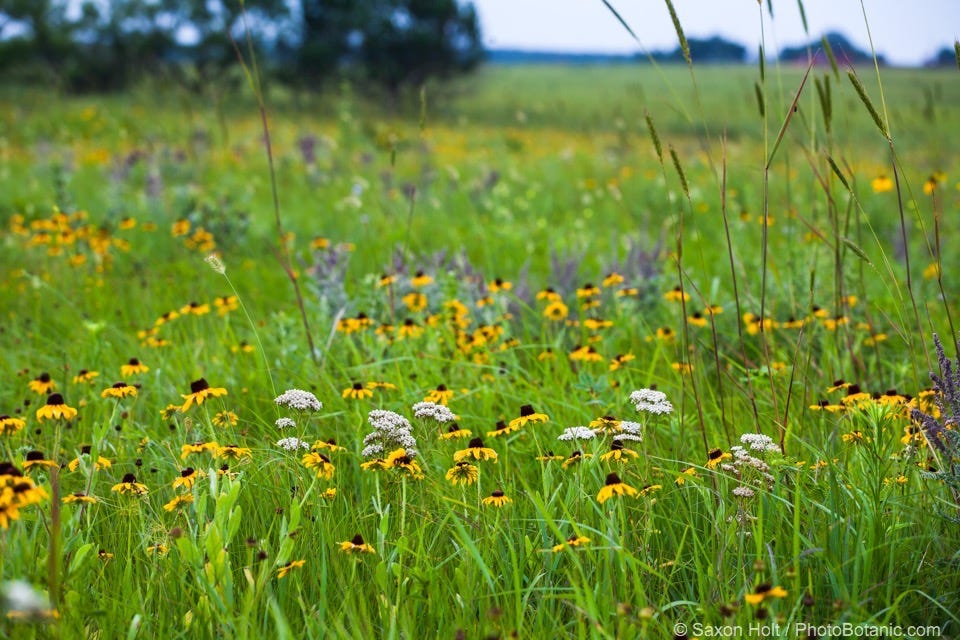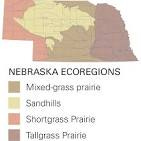April pasture fire and renovation
I have covered in a previous substack the bain that cedar trees are in the grass lands of Nebraska. This particular fire was 500 acres burned on April 11, 2025.
The Stealth Invader of the Great Plains
The ecosystem of the Great Plains is in deep trouble from an invader, that invader just 100 years ago was a welcome sight to the prairies with no trees. Many fostered these invaders, planted them, nursed them along so they could get a foothold in a hostile environment. That invader is cedar trees.
Since we have owned this property we have made some great friends in the area. Even though we are 250 miles away we have always been treated like we lived in the area. We are grateful to the people of this community for welcoming us with these friendships. The learning experience - the knowledge we have gotten from them is invaluable.
Pre fire discussions determine who goes where and the final plans are being made/changed as the the weather/wind change.
The fire is started with drip torches, several people walk the entire perimeter up and down steep hills to ring the area to be burned. The fire is started against the wind so the burn area is enlarged. The reason is once you start the fire going with the wind, the fire moves at the speed of the wind at that point. Once the with the wind part of the fire reaches the against the wind part it has no more fuel and dies out.
As the fire is started a line of water is put down to keep the fire in bounds. These converted military trucks are self built by the farmers and ranchers in the area. 1000, 1500 and more gallon tanks are put on these rigs. a hundred or more feet of hose, some have nozzles around the perimeter of the trucks that can spray water, some have directional nozzles on the front and all the controls for those are in the cab.
As you can see the line is pretty stark where the trucks laid the water down.
You can see just how strong the wind is in the above photo. Coming out of the canyons can really be ferocious. Its like a funnel for the wind and fire.
This shows just how smokey it was, camera had no filter or anything wrong it was just this smokey. I have been where you cannot drive the smoke is so thick. You just pull up your mask watch for flames and drive very slowly out. The smoke can be seen 30+ miles away and if it blocks out the sun the temperature change is very noticable. You can go from being warm to wanting a jacket in minutes.
The below pictures are after 7:
The below pictures and videos are after 7:30 pm, this was a late fire. Usually we are pretty much wrapped up by then or sooner. This day was not that. My brother and I finally went to town around 11:30PM as I had hurt my leg around 4:30 in the afternoon and the pain was starting to really get painful - to the point it was hard to ride in the hills. Some of the crew spent the night due to the lateness in getting the main fire going.
These fires were intense, probably some of the most intense I have seen. 50-100 feet flames and the reflection off the smoke was spectacular. The vidoes below are at sunset and after.
The morning after, their were relief people coming in around 7:00 AM to relieve the over nighters. My brother and I had ATV’s so we can get around faster than the big trucks. We drove the perimeter looking for hot spots and break outs.
Some times the fire is so intense that 50 and 100 feet or more away gets uncomfotable.
Here a hot spot is being put out. The wind was to pick up to 20-30 mph and the crews went around putting out these hot spots so when the wind picked up the hot spots so the fire would not spread later in the day. These embers can go 100’s of feet and it does not take much of an ember to light up a new area. In some cases the updraft can carry embers 100 or more feet into the air and go over a 1/4 more or more and start a fire.
Once it starts to get warm the black will turn to a beautiful green. Prairie grasses have learned to not only tolerate but thrive after a fire. Before these lands were sttle fir regularly ran through these grasslands and kept trees at bay and in river or creek areas. These trees now have gotten out of hand. They are changing the fauna and flora of these great grasslands. Birds such as
Grouse
Prairie Chickens
This is where Grouse and Prairie Chickens live in Nebraska.
The flora in these areas is somewhat unique also. So these trees not only destroy fauna habitat but flora habitat also. These things are worth preserving as we have no idea what they contain that may one day help us with new medicines.
This link is what grows in tall grass prairies.
https://outdoornebraska.gov/wp-content/uploads/2023/03/web-Plants-of-TGP-lgl.pdf
As you can see the tallgrass prairie has all but disappeared. It is a narrow band pretty much up the center of the country.
Most of Nebraskas tall grass prairie has been plowed up for decades. Their are out posts such as: Glacier Creek Preserve at 148th and State Street
https://www.unomaha.edu/college-of-arts-and-sciences/nature-preserves/preserves/index.php
I have about 7macres of native tall grass I planted back in 1985 that I still maintain and use for pasture. Thee warm season grasses come on when the cool season grasses have puttered out for the dog days of summer. It take 3-5 years before you will see much of anything regard prairie grass asthe first few years the roots go donw with very little above ground growth.
We have also converted a 55 acres former cornfield back to prarie at the family ranch. Walking these pastures and grass fields take one back in time. The showy seed heads alte inthe summer and early fall are well over 6 foot tall if not grazed. It is a phonominal experience wondering what our settlers thought riding their wagons, horses or walking through this grass. The sheer beauty, the assortment of colorful flowers, the shapes and sizes, the various grasses and then the fauna from bugs to birds to deer and their interaction. It just puts things in perspective for me. Its a time to wonder, to imagine, to be at peace, to slow down and take the wonders of this earth God created and be amazed and forget about the world for a few minutes or hours. Things many do not get to have, the world might be a better place if many of us got back intouch with nature and its wonderments.
Just for some perspective on how tall this grass gets. Their are stories about being able to tye it over the back of a horse. While it is showey the real action takes place near the ground with other flora and fauna where it bounds with life.
This link shows what grows in short grass praries.
https://outdoornebraska.gov/wp-content/uploads/2023/03/web-Plants-of-SGP-lgl.pdf
https://outdoornebraska.gov/learn/nebraska-habitat/prairies/
Being on thee fires is a great experience, the things learned, the friendships made, the rush is something few will experience. I am one of the lucky few to experience this every year. It is truly a blessing. I cannot thank the people of Arnold Nebraska enough for taking us into their community - it has been a wonderful experience that our family will be eternally greatful for.




